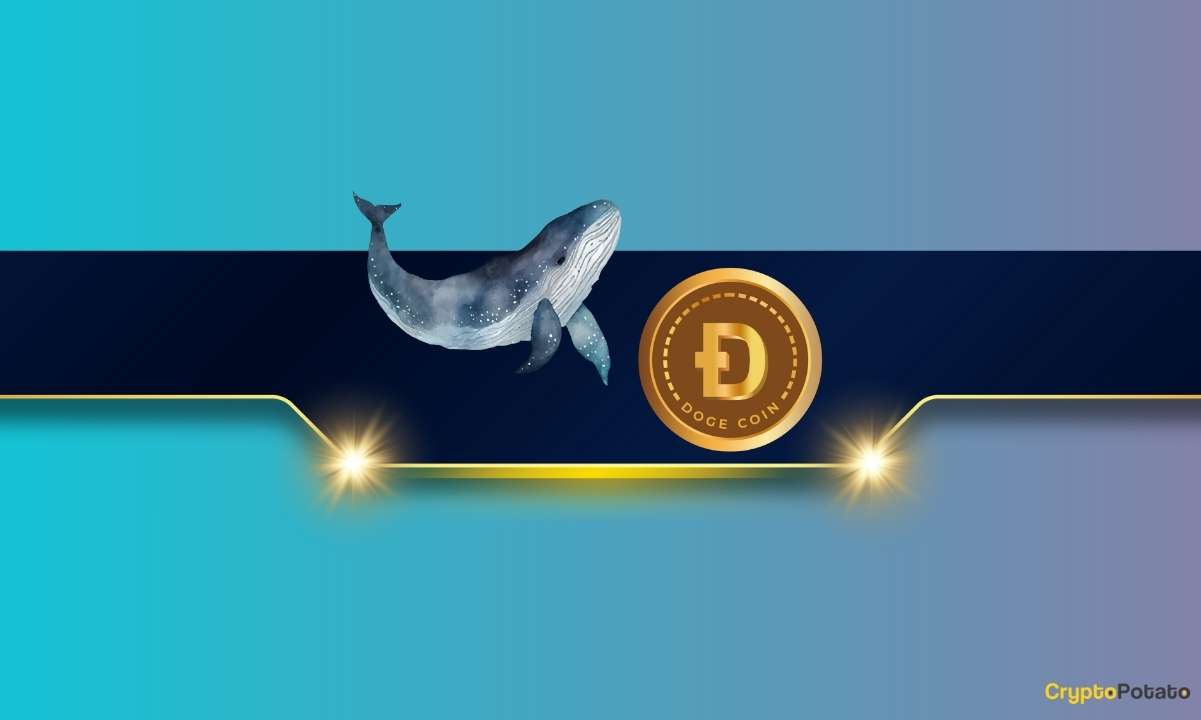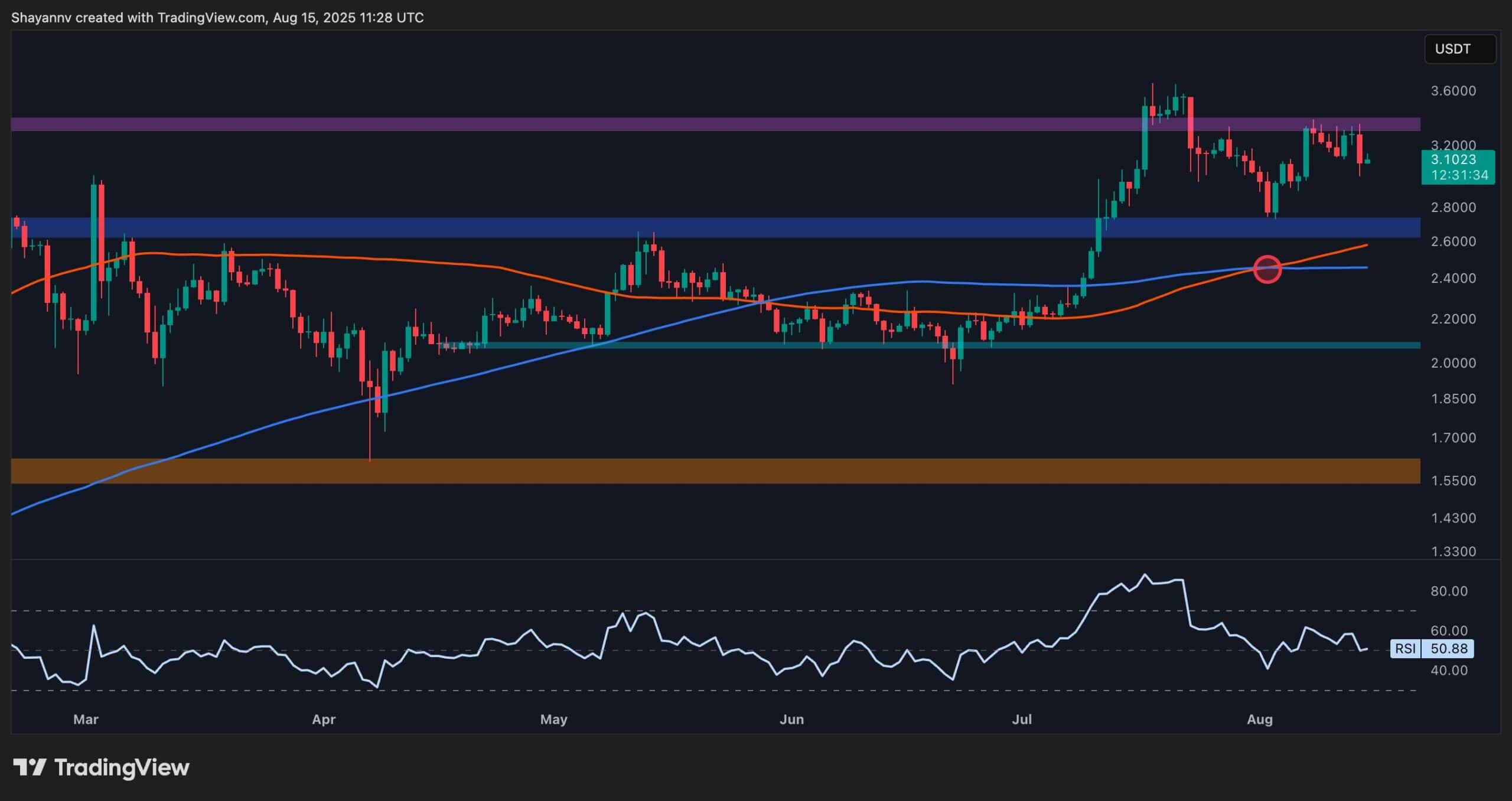Cryptocurrency
‘Massive’ crypto use cases to surface by 2030 — Coinbase exec

Coinbase launched Base, its new blockchain, in late July, and it has already become a major player among Ethereum-based layer-2 chains.
On Sept. 21, for instance, the chain notched some 677,000 transactions, with 870,163 “new addresses seen,” according to Etherscan.
By comparison, Arbitrum, a prominent layer 2 that launched in June 2021, had 925,000 transactions and 54,233 new addresses on the same day.
Base is now hosting hundreds of decentralized projects, Jesse Pollak, head of protocols at Coinbase, told Cointelegraph at Messari’s Mainnet conference in New York City on Wednesday, Sept. 20, including decentralized inflation oracles, restaurant rewards projects, an insurance aggregator and everything in between.
A major force behind the Base project, Pollak sat down with Cointelegraph at Mainnet for a Q&A encompassing Coinbase’s vision for its new platform, the rising promise of decentralized applications (DApps) and the evolution of blockchain technology.
Cointelegraph: You’ve said Base was created with a “clear vision: bring the next million builders and billion users on-chain.” Those are big numbers. How long will they take to achieve?
Jesse Pollak: It’s less about Base specifically and more about a billion users coming on-chain — embracing the power of this new platform [i.e., blockchain] that’s transparent, open, global — and developing apps that can improve people’s lives. Base is obviously going to play a big role in that, but it’s much bigger than just us. We really see our role as helping grow that pie.
CT: And the timeline?
JP: I see it happening this decade, i.e., one million developer jobs by 2030. There’s already been massive change in the 2020s — not just in the industry but the entire world. It’s going to happen faster than people might expect.
CT: What still needs to be done before we see mainstream adoption?
JP: Three high-level things need to happen. First, we need to make it cheaper for people to use these apps that are being built. We’ve done the first few orders of magnitude of cost reduction with Base. The same app might have cost $5 or $10 to use now costs 5 to 10 cents.
But we don’t think that’s enough. We really want to lower it so far that the cost is almost imperceptible to users.
Second, we want to make it easier for people to use these apps. A lot of that is building better wallet experiences.
Third, we need to have better identity infrastructure on-chain. Today, most consumer borrowing in the United States and other developed countries is under-collateralized borrowing in the form of credit cards or buy-now-pay-later arrangements. And almost none of this is possible on-chain now because we don’t have reliable identity systems.
So, to enable that next wave of big use cases, we’ll need lower costs, better wallets and better identity.
CT: You’ve said that what most people have done with crypto until now is speculate on the crypto markets, and it’s time to move on. Has it been a mistake to focus so much on the market price of Bitcoin, say?
Pollak: I don’t think it’s wrong if you look at the way that technology life cycles evolve. Carlota Perez, for instance, writes that financial bubbles are almost inevitable when you have meaningful technological innovation like the internet or electricity. You have this S-curve of adoption. [See chart below.] In the beginning, a lot of innovation is fueled by speculation as people see potential in the technology. This speculation draws in capital, which basically funds the innovation and eventually leads to impacts that change the world.

CT: Where are we now?
JP: We’ve reached the point where it’s time to move out of that [speculative] phase and into the phase of really bringing utility to everyday people. The infrastructure is ready.
Even two years ago, if you wanted to use an app on Ethereum, it was going to cost you $5 or $10 or $100. That’s just not something that is supportive of building everyday use cases.
CT: Speaking of Ethereum, why did Coinbase decide to build its layer 2 on the Ethereum blockchain? Did you ever consider using another mainnet?
JP: We actually looked three times at building a chain: In 2018 and 2020, and then most recently in 2023. And the first two times, we looked at building an alternative layer 1, one which would have been competitive with Ethereum. Our takeaway was we didn’t want to put ourselves on an island disconnected from the rest of the ecosystem.
The third time, we looked at all of the options: Ethereum, alternative layer 1s, layer 2s, etc. What felt natural to us about Ethereum was it is the largest crypto ecosystem by value, by activity, by developers — by order of magnitude or two — and so by building Base as an Ethereum layer 2, we could both contribute to scaling Ethereum and be a part of this ecosystem that’s larger than us.
CT: What about Ethereum’s oft-discussed scalability shortcomings, including network congestion and sometimes ballooning fees? Have those been largely solved through extensive use of layer-2 rollups like Optimism and Arbitrum (and now Base), where transactions are “batched” and added to the mainnet in a single lot?
JP: If you look at the history of Ethereum, the original vision was: We’re going to do all this at layer 1, and we’re going to scale up through sharding. But around 2020 and 2021, as layer 2s emerged, the Ethereum community and core development groups basically said: What if we changed our strategy where instead of trying to introduce all of this complexity at layer 1, we build the infrastructure to enable innovation at layer 2?
That was something that Vitalik [Buterin, Ethereum co-founder] wrote about a lot. And over the last two years, that’s what happened. Coinbase supported an initiative over the last year-and-a-half called EIP-4844, for instance, that introduced data availability for rollups, leading to reduced fees and more transaction throughput.
But do I think we’ve solved the problem? No. These things take years to solve, and I think we are now two to three years into making those investments, and we have another two to three years or more potentially to go. But I think we’ve made a lot of progress.
You can see this at L2Beat. [See chart below]. Two years ago [Sept. 21, 2021], there were eight transactions per second [on average] on layer-2 projects and 13 TPS on the Ethereum mainnet. Today, there’s 58 TPS on layer 2s and 11 TPS on the Ethereum mainnet. So we’ve gone from less than 1x to 5.7 times faster in two years.

CT: Are you surprised that a “buzzy” social media DAPP — Friend.tech — was initially Base’s biggest performer after its summer launch? Its fees surpassed $1 million in one 24-hour period. Still, maybe this wasn’t the serious use case that some critics were hoping for.
JP: Well, when the first social apps launched on the internet, some people looked at them and said, hey, these things are toys. When are we going to go do the serious stuff like bringing newspapers online? If you look at where we are today, social apps are used by billions of people every day. They will continue to be a way that people connect, and social apps will play a critical role on-chain.
What’s powerful about this next generation of on-chain social apps is that they will enable people to have sovereign ownership. They will continue to own their creativity, and they’ll continue to be in control — rather than the large corporations that are controlling them now.
CT: Can you tell us about a DApp launched on Base that excites you?
JP: Check out Blackbird, a customer engagement platform for restaurants. You walk into any participating restaurant, you tap your phone, and it instantly knows who you are. They customize the experience for you. Repeat visitors can earn rewards. It’s in 10 or 15 restaurants now in New York City but is soon expanding into California. A lot of people are talking about it on Twitter.
CT: Where will blockchain finally find its “killer app” — to do for the cryptoverse what email did for the internet? Or has it already emerged in your view?
JP: There won’t be one killer app. There will be many killer apps. We’re starting to see some of those emerge. The one with the most real-world adoption is stablecoins. If you look at the total volume of stablecoin transactions over the last year, it’s a massive number. It will be a big driver of economic freedom in the decade ahead. It gives people in places like Argentina or Turkey access to a stable currency like the U.S. dollar.
But stablecoins won’t be alone. We will see many on-chain applications that will change people’s lives for the better.
Collect this article as an NFT to preserve this moment in history and show your support for independent journalism in the crypto space.
Cryptocurrency
Ethereum Foundation, Whales, and Hackers: What’s Driving the ETH Sell-Off?

TL;DR
- Whales, hackers, and the Ethereum Foundation wallets moved over $500M in ETH through large sales and withdrawals.
- Ethereum transfers rose to 4.6M ETH, nearing the monthly high of 5.2M recorded in July.
- Staking inflows hit 247,900 ETH, the highest in a month, locking more supply from trading.
Large Withdrawals and Whale Activity
Ethereum (ETH) has seen heavy movement from major wallets over the past few days. On-chain data from Lookonchain shows a newly created wallet pulled 17,591 ETH, worth $81.62 million, from Kraken in just two hours.
Over three days, two new wallets withdrew a combined 71,025 ETH, valued at $330 million, from the exchange.
One of these wallets, address 0x2A92, has withdrawn 53,434 ETH, worth $242.34 million, in two days. This includes a recent purchase of 30,069 ETH, valued at $138.46 million, during a market drop.
Major ETH Holders Offload Millions Amid Price Rally
In contrast, several separate entities have been disposing of some ETH holdings. A wallet tied to a hacker address 0x17E0 sold 4,958 ETH for $22.13 million at $4,463, securing a profit of $9.75 million. Earlier this year, the same address sold 12,282 ETH at $1,932 and later bought back part of the amount at higher prices.
A different whale sold 20,600 ETH for $96.55 million over the past two days, generating a profit of more than $26 million after holding the position for nine months.
Meanwhile, an Ethereum Foundation-linked wallet, 0xF39d, sold 6,194 ETH worth $28.36 million in the last three days at an average price of $4,578.
Recent sales from the same wallet included an additional 1,100 ETH and 1,695 ETH for over $12.7 million combined.
The #EthereumFoundation-linked wallet(0xF39d) sold another 1,300 $ETH($5.87M) at $4,518 ~11 hours ago.
Over the past 3 days, this wallet has sold a total of 6,194 $ETH($28.36M) at an average price of $4,578.https://t.co/4hfCWymHVG pic.twitter.com/ErUyEY8SJy
— Lookonchain (@lookonchain) August 15, 2025
Network Activity on the Rise
CryptoQuant data shows Ethereum’s total tokens transferred have been climbing since August 9. After ranging between 1 million and 3 million ETH through late July and early August, transfers have risen to 4.6 million ETH, approaching the monthly high of 5.2 million recorded in mid-July. This increase has occurred alongside a price rally from about $3,400 to $4,600.
Interestingly, staking inflows generally stayed between 20,000 and 80,000 ETH per day over the past month. On August 14, inflows jumped to 247,900 ETH, the highest in the period.
At the time, ETH was trading near $4,600. Large staking deposits reduce the amount of ETH available for immediate trading, as staked coins are locked for a set period.
In the meantime, ETH trades at $4,647 with a 24-hour volume of $68.25 billion, down 2% on the day but up 19% over the week.
Binance Free $600 (CryptoPotato Exclusive): Use this link to register a new account and receive $600 exclusive welcome offer on Binance (full details).
LIMITED OFFER for CryptoPotato readers at Bybit: Use this link to register and open a $500 FREE position on any coin!
Cryptocurrency
Massive DOGE Whale Activity Hints at $1 Breakout

TL;DR
- Whales bought two billion DOGE this week, lifting their combined holdings to 27.6 billion coins.
- A single 900M DOGE transfer worth $208M to Binance drew attention to large exchange movements.
- DOGE broke key resistance, with momentum building for a possible push toward the $1 price mark.
Price and Market Moves
Dogecoin (DOGE) traded at $0.23 at press time, slipping 4% over the past day but still showing a 2% gain for the week. Daily turnover came in at about $6.18 billion.
Meanwhile, the broader crypto market saw over $1 billion in liquidations. Hotter-than-expected US Producer Price Index data pushed traders to scale back expectations of a near-term Federal Reserve rate cut. DOGE had roughly 290,500 coins liquidated during the sell-off.
On the two-week chart, analyst Trader Tardigrade notes that DOGE has cleared a downward-sloping resistance line after completing what appears to be a “wave V” in an Elliott Wave sequence. Similar setups in the past, where prolonged declines stayed within falling channels before breaking higher, have been followed by sharp rallies.
$Doge/2-week#Dogecoin is gaining strong momentum to surge above $1 pic.twitter.com/TuSEKr19nv
— Trader Tardigrade (@TATrader_Alan) August 15, 2025
Momentum gauges are also turning up. The Stochastic RSI, which had dropped into oversold territory, is now heading higher. Previous reversals from this zone have coincided with sustained upward moves. The current formation points to a possible run that could carry DOGE past the $1 mark.
Heavy Whale Buying and Large Transfers
As reported by CryptoPotato, blockchain data shows large investors have added two billion DOGE in the past week, spending just under $500 million. That brings their holdings to about 27.6 billion coins, or 18% of the supply. The buying streak has prompted speculation within the community.
Recently, Whale Alert flagged a 900 million DOGE transfer worth about $208 million into Binance. The tracking indicates that it originated from a wallet connected to the exchange, likely as an internal activity. The address involved holds 2.88 billion DOGE, one of the largest balances on the network.
Ali Martinez also reports that transactions above $1 million reached a one-month high, with activity building since early August and peaking as DOGE traded at $0.25.
Whales are back! Dogecoin $DOGE activity at a 1-month high. pic.twitter.com/C83Pv68mCt
— Ali (@ali_charts) August 14, 2025
Sentiment Building
Analyst Gordon described the current setup as “a nice bit of consolidation” before a potential breakout, adding,
“This will be one of the first coins normies FLOCK to & the pump will be MASSIVE.”
With whale accumulation rising, high-value transfers increasing, and a bullish technical pattern in play, DOGE is positioned for a potential push toward $1 if momentum holds.
Binance Free $600 (CryptoPotato Exclusive): Use this link to register a new account and receive $600 exclusive welcome offer on Binance (full details).
LIMITED OFFER for CryptoPotato readers at Bybit: Use this link to register and open a $500 FREE position on any coin!
Cryptocurrency
Ripple Price Analysis: XRP at Risk as Key Support Levels Could Trigger Sharp Drop

XRP has recently entered a consolidation phase after a strong rally earlier this summer, with the price action now hovering around key resistance levels on both its USDT and BTC pairs. Yet, while momentum has slowed, the charts still indicate a generally bullish structure, with multiple key support levels remaining firmly in place.
Technical Analysis
By ShayanMarkets
The USDT Pair
On the XRP/USDT daily chart, the price is currently trading near the $3.10 mark, facing a strong resistance zone around $3.40. This follows a breakout above the $2.70 range in July, which has now flipped into a support area.
Both the 100-day and 200-day moving averages are also trending upward and recently formed a bullish crossover around $2.45, reinforcing the medium-term bullish sentiment. If the $3.40 resistance breaks, a push toward the critical $4.00 range becomes likely.
However, the RSI hovering near the neutral 50 level suggests a lack of strong momentum for now, meaning a short-term pullback into the $2.80 support zone is still possible.
This zone will be key for maintaining the bullish structure. Losing it could open the door for a deeper correction toward the 200-day moving average located around the $2.40 mark. Yet, as long as the price stays above the moving averages, the broader trend remains bullish.
The BTC Pair
Looking at the XRP/BTC chart, the pair has recently pulled back after hitting the 3,000 SAT resistance, with the price currently around 2,600 SAT.
This follows a clean breakout above the long-term descending channel and a successful retest of its upper boundary, which coincided with the 200-day moving average and the 2,400 SAT support zone. This confluence remains a key bullish technical factor, as holding above it could attract renewed buying pressure.
That said, RSI levels around 48 show that momentum has cooled after the sharp July rally, meaning XRP may continue ranging between 2,400 SAT and 3,000 SAT in the near term. A decisive close above 3,000 SAT would likely open the path to the 3,400 SAT zone, while losing 2,400 SAT could shift the bias back toward 2,000 SAT support. For now, the structure still favors the bulls as long as higher lows remain intact.
Binance Free $600 (CryptoPotato Exclusive): Use this link to register a new account and receive $600 exclusive welcome offer on Binance (full details).
LIMITED OFFER for CryptoPotato readers at Bybit: Use this link to register and open a $500 FREE position on any coin!
Disclaimer: Information found on CryptoPotato is those of writers quoted. It does not represent the opinions of CryptoPotato on whether to buy, sell, or hold any investments. You are advised to conduct your own research before making any investment decisions. Use provided information at your own risk. See Disclaimer for more information.
Cryptocurrency charts by TradingView.

 Forex3 years ago
Forex3 years agoForex Today: the dollar is gaining strength amid gloomy sentiment at the start of the Fed’s week

 Forex3 years ago
Forex3 years agoUnbiased review of Pocket Option broker

 Forex3 years ago
Forex3 years agoDollar to pound sterling exchange rate today: Pound plummeted to its lowest since 1985

 Forex3 years ago
Forex3 years agoHow is the Australian dollar doing today?

 Cryptocurrency3 years ago
Cryptocurrency3 years agoWhat happened in the crypto market – current events today

 World3 years ago
World3 years agoWhy are modern video games an art form?

 Commodities3 years ago
Commodities3 years agoCopper continues to fall in price on expectations of lower demand in China

 Economy3 years ago
Economy3 years agoCrude oil tankers double in price due to EU anti-Russian sanctions





















